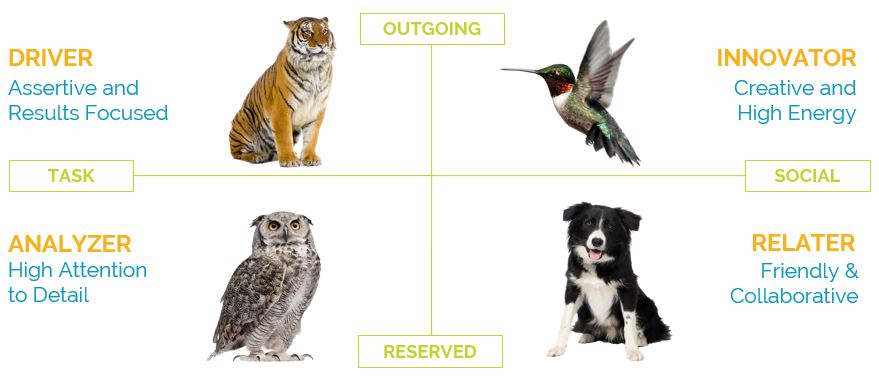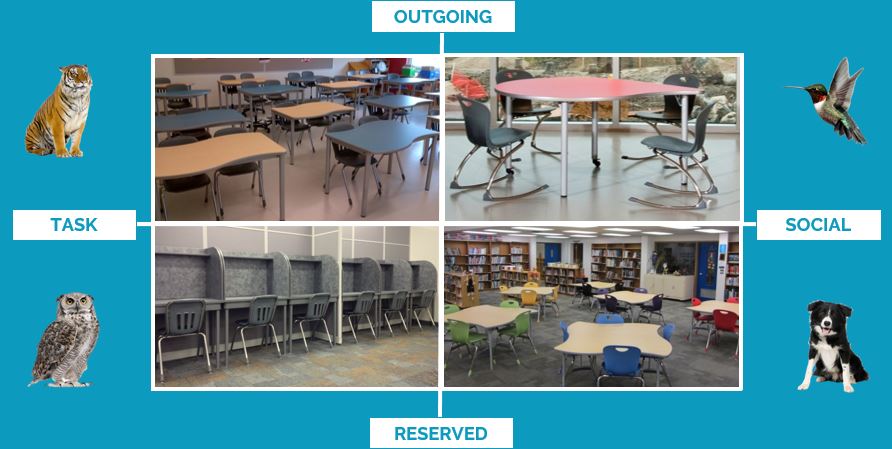Accentuated Learning Environments
What is an Accentuated Learning Environment?
An Accentuated Learning Environment is an inclusive learning environment that balances the needs of each student’s personal learning style, recognizes individual communication styles, and supports flexible teaching styles for the educator. Let us explain what this means.

First, every individual within a classroom is unique in their own way. We have different personalities, different communication styles and different ways in which we prefer to learn. A classroom is a random group of people with a vast array of different needs. For example, an introverted student might prefer solitude and their own space. Whereas, an extroverted student is more social and prefers the company of others.
Students also have different capacities and desires to learn. In addition, teachers have different teaching styles and may prefer different methods of instruction. In essence, each classroom is a totally unique social gathering. Unfortunately, classrooms have been typically organized in a static way without any acknowledgement of the uniqueness of each student and teacher. The goal of the Accentuated Learning Environment is to create a dynamic classroom setting where students learn and educators teach according to their natural tendencies.
In an Accentuated classroom environment, students can select whether they want to sit together with classmates at a table while others may prefer to sit alone at a desk. The classroom structure encourages the teacher who prefers to roam throughout the class to do so. The Accentuated Learning Environment doesn’t force fit students or teachers into rows and columns.

7 Reasons Why an Accentuated Learning Environment?
Today, there is a fundamental shift in the way classrooms are being organized and the traditional approach to the arrangement of classroom furniture is changing. There are seven main reasons behind this trend.
1. First, our clients tell us that students who have extremely high or extremely low measurements of a certain personality trait are typically the ones most at-risk to fail.
2. In the past, student success was based mainly on the retention of facts. Today, it has shifted towards students demonstrating they can apply knowledge and this typically takes collaboration.
3. There is an “achievement gap” that exists in every classroom between the fastest and slowest learners. Researchers at University of Salford in the United Kingdom have shown that a well-designed classroom can improve students’ academic performance by 25%.
4. Smart phones, social media, and texting have become a way of life for students and this has shortened their attention spans.
5. If you asked a student in the 80’s what career they wanted they might have said doctor, lawyer or teacher. Many of today’s students will be employed in jobs that don’t exist today.
6. The current generation of students is more independent and socially aware. They are less inclined to conform within the traditional institutional frameworks than past generations were.
7. The trend of the teacher-centered approach where the teacher is main authority figure, is moving towards a more student-centered approach with the emphasis on student participation.
The Impact of Personality Styles on Learning
A student’s personality greatly impacts their ability to learn. The Myers-Briggs Personality Test is the world’s most popular test and variations are used by psychologists, therapists, personnel directors, and guidance counselors all around the world. The test gives some indication of each persons dominant personality traits and can help educators in determining what environment is most condusive to the learners development.

One interpretation of the Myers Briggs test divides people into four basic personality types. They are the Driver, Innovator, Analyzer, and Relater type.
1. The Driver personality type is assertive and results focused. We chose the image of the tiger to represents this personality type. A tiger is a strategic hunter and the king of the jungle.
2. The Innovator personality type is creative and full of energy, never able to sit at one place for long. We chose the hummingbird to represent the Innovator.
3. The Analyzer personality type is a detail oriented and methodical learner. The owl represents the Analyzer.
4. The Relater is a social learner and collaborator who seeks the company of others. The dog represents the Relater.
Drivers and Innovators tend to have more extroverted personality types and dominate groups and social settings. Analyzers tend to have more introverted personality types and shy away from groups. Although Relaters may be introverted or extraverted, they tend to work well in group settings. Every classroom includes a mix of personality types with each bringing their own perspective and unique learning challenges.
1. The Driver requires clarity and direction and wants to know what’s coming next.
2. The Innovator loses focus easily without constant movement or stimulation.
3. The Analyzer functions best in quiet and peaceful environments.
4. The Relater uses social interaction to learn.
The setting, configuration of the classroom and the furnishings should address these challenges. As opposed to placing each personality type in the identical setting, an Accentuated Learning Environment accommodates the nuances of each personality. For example, here are different learning environments that correlate to each personality style.

Because the driver likes to be in control they don’t mind working with others. However, they may not want to compete with another driver for attention in a larger group of people, so smaller collaborative settings work well for this personality type. The innovator tends to be more social than the driver so a larger group setting doesn’t bother them, but because of their higher energy levels they need the ability to move. For example, notice the rocker chairs in the Innovator quadrant. Individual carrels are an excellent study area for the Analyzer. Meanwhile, the Relater thrives in larger collaborative settings but notice how the indented tables identify their areas so that they can maintain their boundaries.


